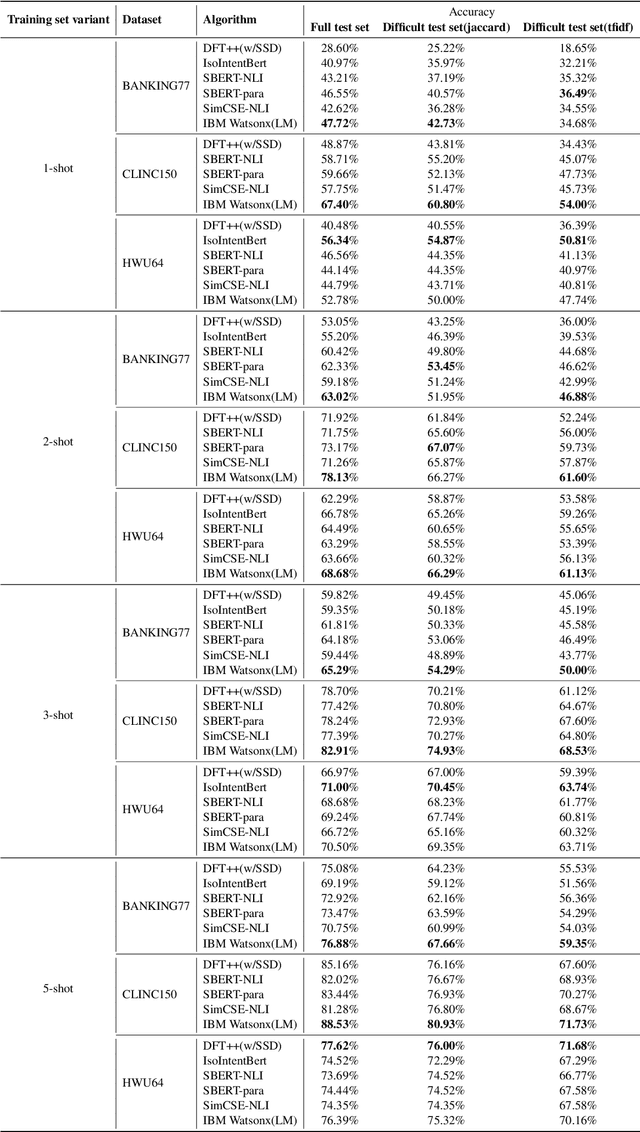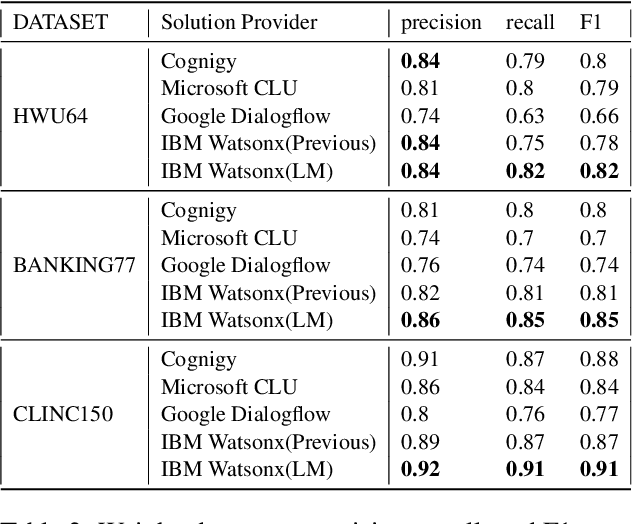Reza Fazeli
Practical token pruning for foundation models in few-shot conversational virtual assistant systems
Aug 21, 2024


Abstract:In an enterprise Virtual Assistant (VA) system, intent classification is the crucial component that determines how a user input is handled based on what the user wants. The VA system is expected to be a cost-efficient SaaS service with low training and inference time while achieving high accuracy even with a small number of training samples. We pretrain a transformer-based sentence embedding model with a contrastive learning objective and leverage the embedding of the model as features when training intent classification models. Our approach achieves the state-of-the-art results for few-shot scenarios and performs better than other commercial solutions on popular intent classification benchmarks. However, generating features via a transformer-based model increases the inference time, especially for longer user inputs, due to the quadratic runtime of the transformer's attention mechanism. On top of model distillation, we introduce a practical multi-task adaptation approach that configures dynamic token pruning without the need for task-specific training for intent classification. We demonstrate that this approach improves the inference speed of popular sentence transformer models without affecting model performance.
 Add to Chrome
Add to Chrome Add to Firefox
Add to Firefox Add to Edge
Add to Edge